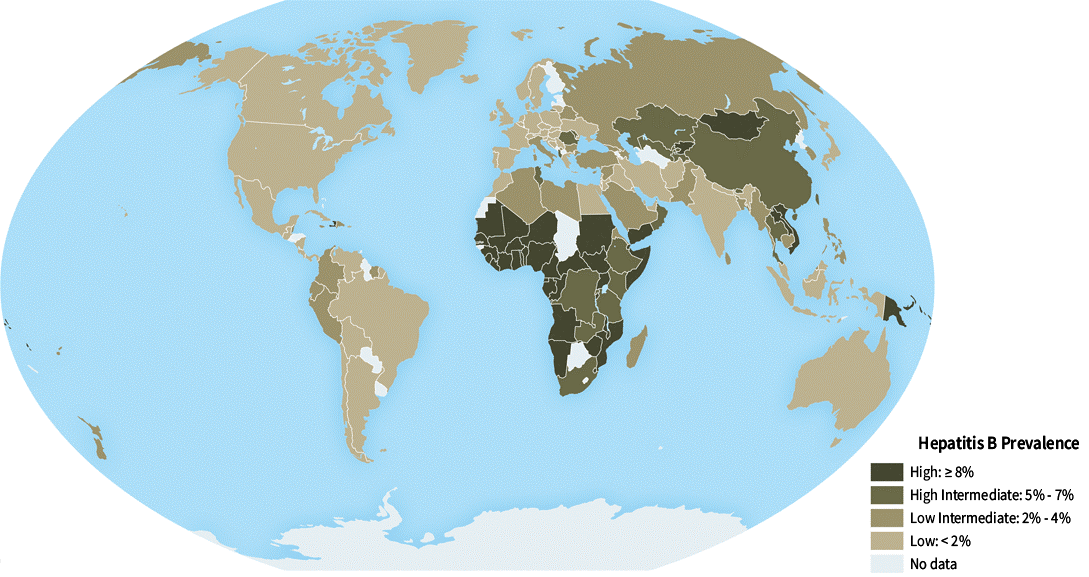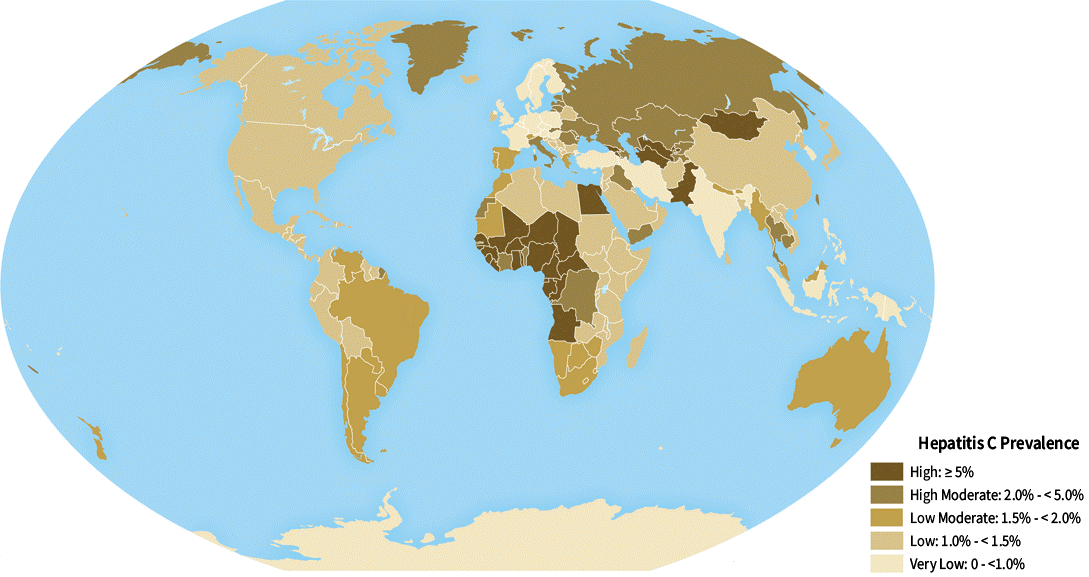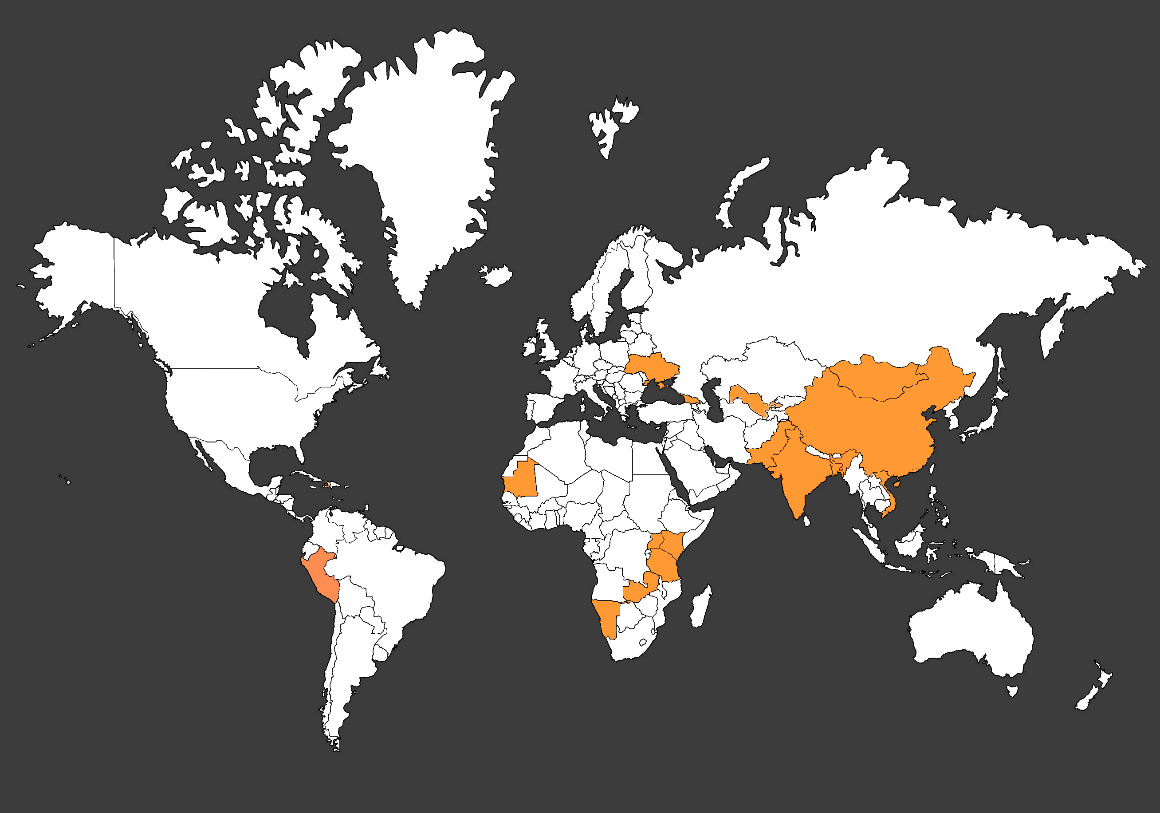Global Viral Hepatitis: Millions of People are Affected
Viral hepatitis (hepatitis A, hepatitis B, hepatitis C, hepatitis D, hepatitis E) affects millions of people around the globe; hepatitis B and C result in chronic infections and disproportionately impact certain countries (see maps below).


The World Health Organization (WHO) estimates that in 2015:
- 257 million people worldwide had hepatitis B
- 71 million people worldwide had hepatitis C
Both of these types of hepatitis can lead to lifelong infection. WHO estimated that during the same year, 1.34 million people died from liver cancer, cirrhosis, and other conditions caused by chronic viral hepatitis (1).
Hepatitis A and hepatitis E infections do not result in chronic infection but can be severe and cause liver damage and death. Outbreaks of these infections occur worldwide, particularly in parts of the world with poor sanitation.
Progress Being Made Worldwide
All types of viral hepatitis can be controlled or prevented.
- Hepatitis C can be cured; a once-daily medication taken by mouth for as few as 8 weeks can cure most people who are infected with hepatitis C.
- Hepatitis B medications are available to help prevent liver damage and slow progression of the disease.
- Hepatitis A and hepatitis B can both be prevented with safe and effective vaccines. Efforts to increase the number of children vaccinated against hepatitis B around the world have dramatically reduced the number of new hepatitis B virus (HBV) infections.
- Hepatitis A and hepatitis E can also be prevented and cases reduced with improvements in sanitation, because these infections are transmitted from infected feces either person-to person or through contaminated food and drinking water.
Room for Improvement in Prevention and Treatment
Safe and effective vaccines to protect against hepatitis A and hepatitis B are available. Hepatitis A vaccine is used in only a few countries; greater use of the vaccine has the potential to control outbreaks. In 2015, global coverage with three doses of hepatitis B vaccine was 84%, and 39% of children received a dose at birth, which is necessary to prevent mother-to-child transmission of this infection. Improving rates of vaccination coverage, especially among including infants and children, will reduce hepatitis B infection, which can lead to liver disease and death.
Even though affordable, safe, and effective treatments can prevent liver disease and liver cancer among people living with hepatitis B and cure those living with hepatitis C, WHO estimated that only 10% of people with hepatitis B and 20% of people with hepatitis C worldwide knew they were infected in 2015. Of these, less than 10% had received treatment (1).
CDC’s Division of Viral Hepatitis Collaborates Worldwide
CDC’s Division of Viral Hepatitis assists with the implementation of viral hepatitis strategiesexternal icon and makes progress towards achieving global viral hepatitis elimination goals in countries around the world (see map below). Collaborative work with partners, including in-country national CDC offices, Ministries of Health, international public health professionals, and foreign government officials, is focused on efforts to develop, implement, monitor, and evaluate viral hepatitis-related guidelines, policies, plans, and programs. For example, CDC helped plan for and implement the country of Georgia’s hepatitis C elimination program, the first program of its kind, and is continuing to provide technical assistance to Georgia as the program goes forward. Additionally, CDC assisted in the implementation of a pilot program to eliminate hepatitis B and C from the country of Uzbekistan using an innovative funding approach tailored to the needs of low- and middle-income countries (2). These types of international collaborations not only help the host country, but can help reduce the risk for disease among U.S. travelers abroad and reduce the likelihood that people coming to the United States are infected.
Map: A partial list of countries* with whom CDC’s Division of Viral Hepatitis has recently collaborated to enhance viral hepatitis prevention and control efforts

Global Efforts to Improve Delivery of Hepatitis B Vaccine during Infancy
The safe and effective hepatitis B vaccine has dramatically decreased the number of new hepatitis B virus infections reported worldwide, but many unvaccinated children continue to become infected. The biggest gap in vaccination coverage is the failure to administer a first dose of vaccine within 24 hours of birth, which is needed to protect infants, particularly infants born to HBV-infected mothers. According to WHO, fewer than 40% of children worldwide had received a birth-dose of hepatitis B vaccine in 2015 (1).
Global Efforts to Eliminate Viral Hepatitis
In 2016, WHO’s World Health Assembly called for global elimination of viral hepatitis by 2030 (3) and set global targets of achieving 90% reduction in new cases of hepatitis B and hepatitis C, a 65% reduction in deaths from hepatitis B and hepatitis C, and treatment of 80% of people living with these infections (4). Individual countries are now in different stages of developing their own viral hepatitis elimination plans (5).
References
- World Health Organization. Global hepatitis report, 2017. Available at: https://www.who.int/hepatitis/publications/global-hepatitis-report2017/en/external icon
- CDC. Progress toward hepatitis B and hepatitis C elimination using a catalytic funding model — Tashkent, Uzbekistan, December 6, 2019–March 15, 2020. MMWR 2020; 69(34):1161–5.
- Draft Global Health Sector Strategies Viral Hepatitis 2016–2021. Available at: https://www.who.int/hepatitis/strategy2016-2021/enexternal icon
- WHO. Combating Hepatitis B and C to Reach Elimination by 2030. World Health Organization, Geneva; 2016.
- Center for Disease Analysis Foundation. Just 12 countries worldwide on track to eliminate hepatitis C infection by 2030, with United Kingdom, Italy and Spain among those joining the list. 2018 [cited 2019 June 5]; Available from: https://cdafound.org/just-12-countries-worldwide-on-track-to-eliminate-hepatitis-c-infection-by-2030-with-united-kingdom-italy-and-spain-among-those-joining-the-list/?platform=hootsuiteexternal icon.
